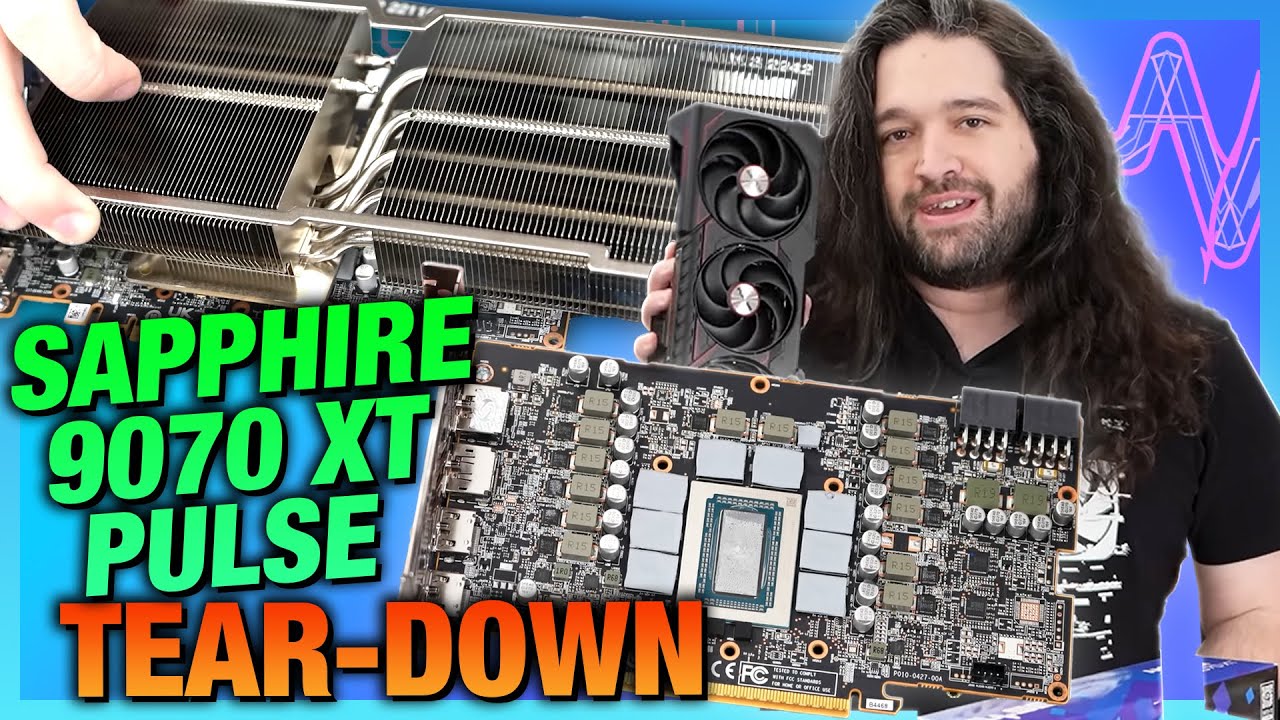The video features a teardown of Sapphire’s RX 970 XT Pulse graphics card, highlighting its build quality, ease of disassembly, and thermal performance, while noting some manufacturing inconsistencies and concerns about high memory temperatures due to erratic fan response. Despite being extremely quiet during operation, the host suggests that Sapphire could improve thermal management through BIOS updates and fan speed adjustments for better performance.
In the video, the host conducts a teardown of Sapphire’s RX 970 XT Pulse graphics card, addressing its assembly, build quality, and thermal performance. The card features a triple-fan cooling solution and is positioned as a more affordable option in the current GPU market. The host notes some manufacturing inconsistencies, such as a bent fin stack, but reassures viewers that these issues are unlikely to impact performance significantly. The video is sponsored by Thermal Grizzly, which promotes its new thermal paste designed for long-term stability.
The teardown process is highlighted as straightforward, with the host appreciating the easy access to components for repair and maintenance. Sapphire has designed the card in a way that allows for fan replacement without disturbing the thermal paste, which is a notable advantage for users. The assembly process is discussed, with the host pointing out that while some screws are required to disassemble the card, the design facilitates efficient access to critical components. The video also emphasizes the importance of build quality and repairability in graphics cards.
Thermal performance is a significant focus of the video, as the host presents data on the card’s temperatures during testing. The RX 970 XT Pulse reaches an average GPU temperature of 56°C and a hotspot temperature of 81°C, which are considered acceptable. However, the memory temperature is a concern, reaching 90°C due to the card’s cooling design and fan behavior. The erratic fan response is criticized, as it fails to adequately address the high memory temperatures, suggesting a need for improvement in the card’s BIOS tuning.
The noise levels of the RX 970 XT Pulse are also discussed, with the card being noted as extremely quiet during operation. While the low noise is commendable, the host argues that there is room for Sapphire to increase fan speeds without compromising user comfort. This could help manage the high memory temperatures more effectively. The video suggests that users may want to manually adjust fan settings to prevent overheating, particularly in cases where the card is installed in a computer case.
In conclusion, the teardown reveals a mix of strengths and weaknesses in the RX 970 XT Pulse. The ease of disassembly and repairability are significant positives, while the thermal management and fan behavior require attention. The host expresses hope that Sapphire will address these issues through BIOS updates, emphasizing the importance of user feedback in improving product performance. Overall, the video serves as a comprehensive examination of the card’s design and functionality, providing valuable insights for potential buyers and enthusiasts.
